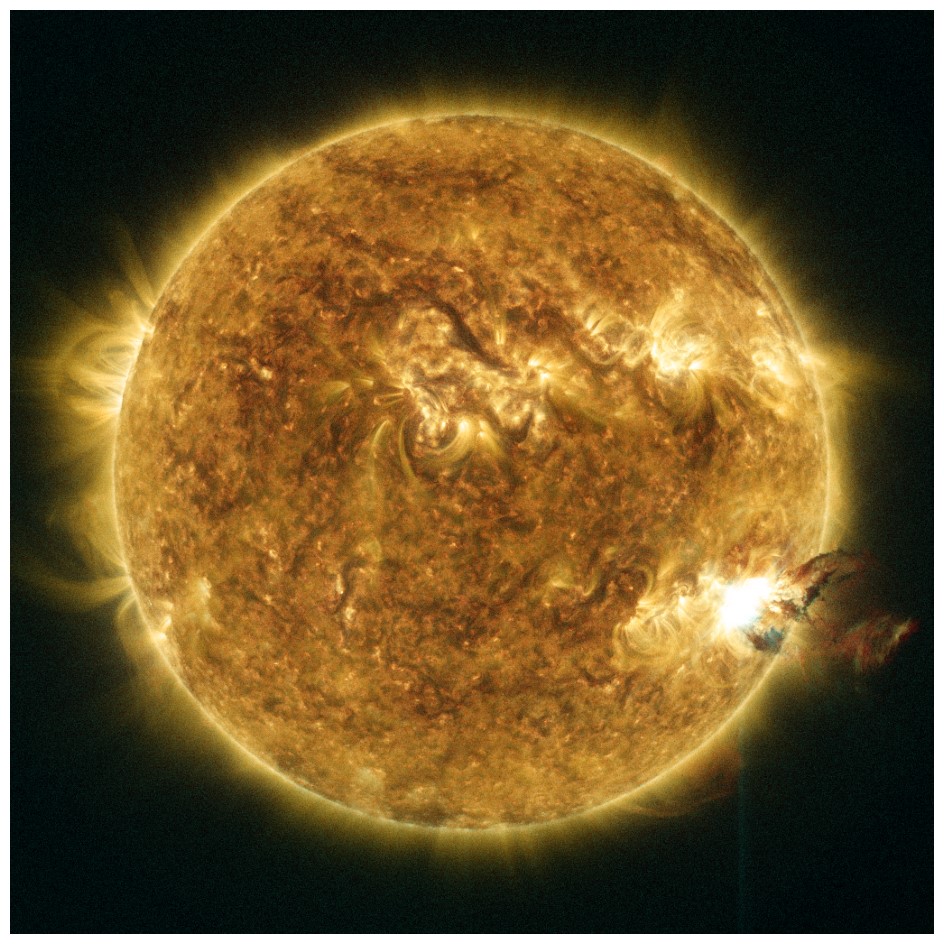AI Generated Supernova Discovery: Shocking Glimpse Into Stellar Death Revealed!

For the first time ever, astronomers have captured a dying star stripped nearly to its core right before it exploded in a dazzling supernova! This astonishing phenomenon, labeled SN 2021yfj, has peeled back the curtain on the mysteries of stellar deaths in ways we’ve never seen before.
This groundbreaking discovery emerged from researchers at Northwestern University, who first detected the supernova in 2021 through the Zwicky Transient Facility. They later delved deeper into its secrets using the legendary W.M. Keck Observatory in Hawaii, revealing a cosmic spectacle that challenges everything we thought we knew about the life cycle of massive stars.
Unlike typical supernovae, whose spectral signatures are dominated by lighter elements like hydrogen and helium, SN 2021yfj presented a cosmic cocktail rich in silicon, sulfur, and even argon—elements normally found nestled deep within a star. This explosive discovery means that this star lost its outer layers, leaving its bare core exposed just moments before its cataclysmic finale!
The study detailing this extraordinary find was published in the August 2025 edition of Nature by astronomer Steve Schulze and his team. They are challenging long-held theories about stellar mass loss, unveiling what they term a new class of stellar explosion. While it confirms the longstanding belief in the onion-like structure of massive stars, it also raises new questions about how and how much matter a star can shed before going supernova.
For decades, understanding a star's inner workings has been a challenge for astronomers, who relied on indirect observations and late-stage supernovae. However, SN 2021yfj provides a rare opportunity to peer right into the heating heart of a dying star. The unusual chemical signature it left behind is a major clue. Where most supernovae flaunt lighter elements, this one’s spectrum is dominated by those heavier elements, hinting at a deeper stellar anatomy stripped bare.
What could have led to such an extreme loss of material? Scientists speculate it could have been a result of violent stellar winds or interactions with a binary companion star. However, we may never know the exact cause since the star has already met its fiery end. The Northwestern University team is now advocating for a radical shift in how we understand stellar explosions, suggesting that stars can indeed lose significant mass before they meet their explosive fate.
This discovery has sent shockwaves through the astrophysical community, urging a reevaluation of how massive stars evolve and die. Typically, stars keep their outer layers intact until they explode, but SN 2021yfj rewrites this narrative. It shows that our models must adapt to include more instances of extreme mass loss and core exposure that were previously unaccounted for.
Thanks to the unique chemical signature of SN 2021yfj, astronomers have proposed a new classification for this type of explosion: Type Ien Supernova, where the "en" denotes two distinct features: envelope stripping and interaction with the surrounding material. This new category could account for a significant group of explosive events that were previously mischaracterized or misunderstood. SN 2021yfj isn’t merely an outlier; it’s a key piece of the cosmic puzzle, reshaping our understanding of the relationship between stellar mass, structure, and the explosive forces that signal the end of a star's life.






























